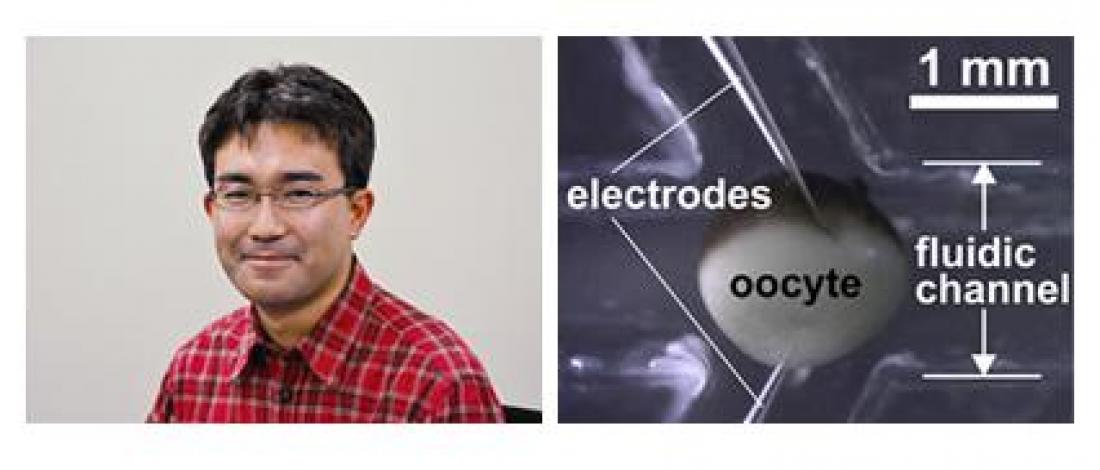Dr Misawa and Fig. 1: Xenopus oocyte trapped glass capillary electrodes in the fluidic device.
Most chemical sensors are based on inorganic materials such as metal-oxide semiconductors and quartz crystals. However, it has proven difficult to develop chemical sensors equipped with good portability while demonstrating high sensitivity and selectivity.
To overcome this problem, Nobuo Misawa at the Electronics-Inspired Interdisciplinary Research Institute (EIIRIS) at Toyohashi Tech and colleagues at The University of Tokyo investigated the possibility of exploiting biological systems, which exhibit unique reactions to a range of chemicals at the molecular level.
Misawa and colleagues focused on a chemical sensor composed of living cells from frog eggs (Xenopus laevis oocytes), and compact fluidic devices integrated with glass capillary electrodes (Fig.1). The pairs of glass capillary electrodes were used to detect the oocytes' response to a particular chemical by the two-electrode voltage clamping method. The frog eggs were genetically modified to express specific olfactory receptors.
The chemical sensitivity of the sensor was a few parts per billion in solution and it was possible to simultaneously distinguish different types of chemicals with only slight differences in chemical structure. A semi-automatic method to install cells to the fluidic device was successfully established, enabling stable and reproducible odorant sensing.
Furthermore, the sensor worked for multiple-target chemicals and it was possible to integrate it with a robotic system (Movie 1).
The sensor developed by the researchers is compact and easy to replace in the system. These characteristics of the sensor would enable its applicable as part of an active sensing system for environmental monitoring, food administration, and health management.
For references and link to the movie clip, please click on the Toyohashi Tech eNewsletter link below



